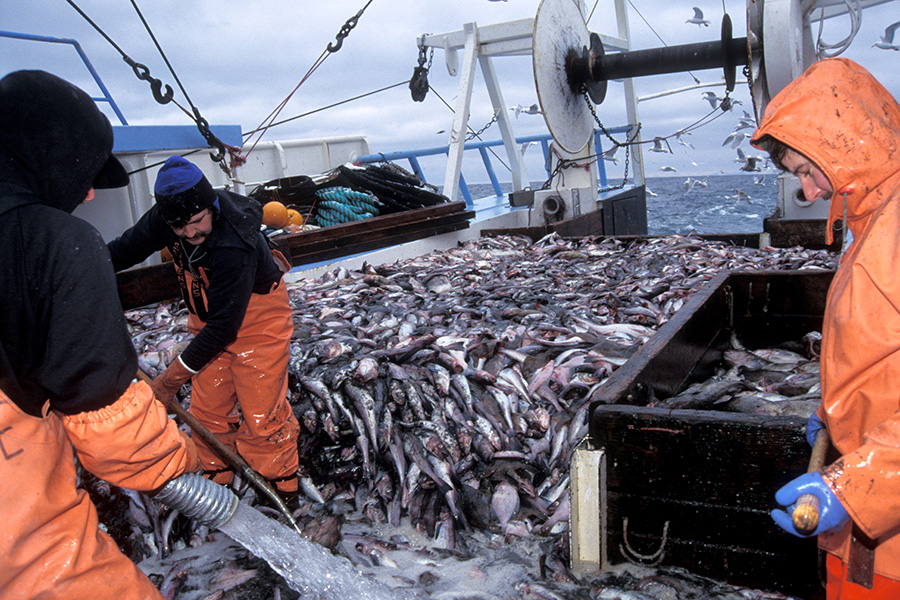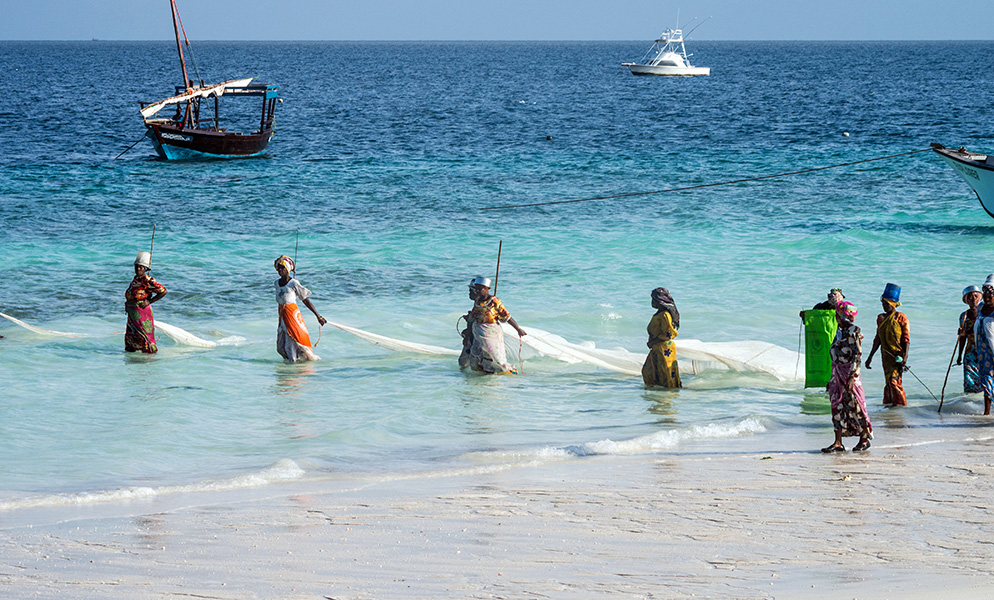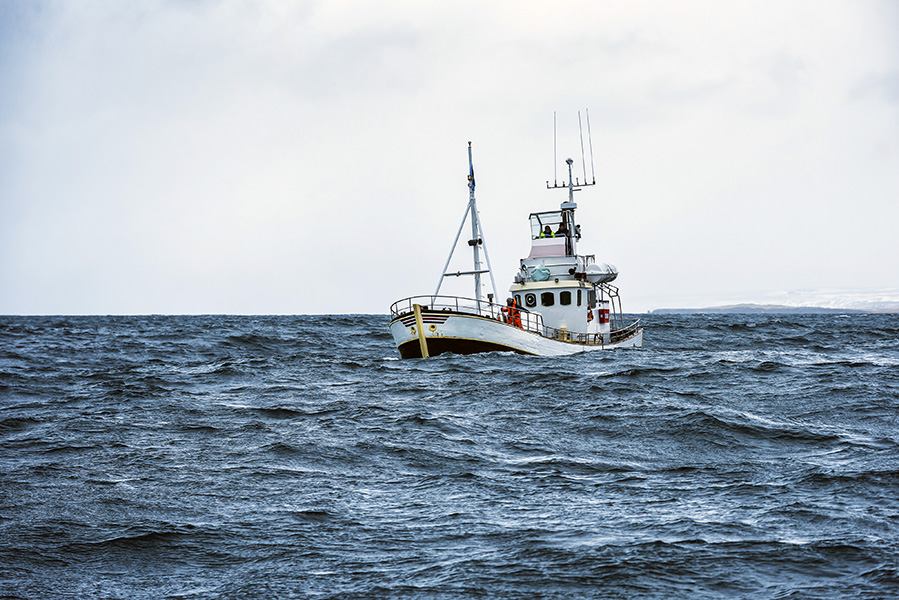Q&A — Fisheries biologist Daniel Pauly
Not enough fish in the sea
The scientist who found a way to tally up global catches is an ocean advocate and a vocal critic of industrial fisheries. Now we have a treaty for the high seas — but does it go far enough?
Support sound science and smart stories
Help us make scientific knowledge accessible to all
Donate today
Daniel Pauly is one of the world’s most cited fisheries researchers — and someone who’s used to making waves. He has called for a ban of subsidies that promote overfishing, such as ones that make shipping fuel cheaper or keep market prices artificially high. And he has compared the global fishery industry to an unsustainable Ponzi scheme: Just as fraudsters subsist only by finding new investors to scam, he says, fisheries survive only by finding previously unexploited stocks to fish.
This February, Pauly and colleague Rashid Sumaila won the prestigious Tyler Prize for Environmental Achievement from the University of Southern California for their efforts championing ocean sustainability. The pair, for example, penned a petition to the United Nations this February in advance of an international meeting to hammer out a new high seas treaty, calling for those waters to be declared a massive UN Protected Area that bans commercial fishing. That treaty was finally forged on March 4 to broad acclaim; it includes a way to designate marine protected areas in the high seas, but it does not go nearly as far as the duo had asked in terms of marine wildlife protections.
Pauly is no stranger to conflict and hard times. In the wake of World War II, he recounts, his mother sent him from France to live with a Swiss couple for a few months, but they never sent him back. At the age of 16, he ran away to Germany, where he finished his studies and became a fisheries biologist. He worked in Ghana, Tanzania and then the Philippines for 15 years, and wound up in Canada where, in 1999, he founded the Sea Around Us initiative at the University of British Columbia in Vancouver. That project, described in the 2023 issue of the Annual Review of Marine Science, aims to quantify humanity’s impact on fisheries and seek the best ways forward.
Knowable Magazine spoke with Pauly about his work. This conversation has been edited for length and clarity.
How did the Sea Around Us project start?
In 1997, I was invited by the Pew Charitable Trusts (at the time, it was a foundation) to participate in a meeting along the lines of: What would you do if you had lots of money to answer the questions “How is the ocean doing?” and “How can we improve what we do to the ocean?” There were five or six heavyweights in oceanography, and me. They all said: We need more data (most scientists always say we need more data) and then in 20 years you can say something. I was the last to speak, and I said: This is nonsense. The fisheries are sampling the ocean for us. All we need to do is to document fisheries properly, and then we can extract information about the state of the ocean.
I got about $1.2 million a year, for 15 years, from Pew to do this. And that was the basis of all of our success. We documented the world fisheries, and we made this available to the world.
Today it’s more difficult, because we don’t have this kind of support. We have about one-third of the money, assembled from various sources.
How did you get the data to document fisheries?
Basically, every year, the FAO (Food and Agriculture Organization of the United Nations) publishes the data that they get from their member countries about their fisheries. But the catch data is incomplete.
For example, Canada doesn’t send the FAO the catch of their recreational fisheries, or the catch made by foreign fleets in its own waters, or discarded catch, or bycatch — fish caught by accident alongside the target species. In the US, only the catch made in their federal waters, further than three miles from the coast, is sent.
Many Pacific Island nations will not report the catch made by local fishers, including women on reefs, which often feeds their population. That’s up to 80 percent of their catch, which goes into cooking pots but is never reported. How do we know about it? We know because the World Health Organization publishes, for example, fish consumption. Many countries don’t import fish, so they must get it from their own waters.
There are a few countries where officials can get political mileage by saying their fisheries are doing well. For example, Myanmar has for years sent to FAO not their catch, but the projection for what they expect to catch next year. That was smoothly increasing: In 2008, they had a major hurricane that destroyed half their fishing fleet, but it didn’t show up in their FAO reports.
The Chinese statistics are bad as can be.
We have to fix all this, fill in the gaps. We find data sometimes in anthropological papers, in gender studies, in health studies, anywhere that documents what people are eating and doing.
Each year, a global estimate of fish catches is put out by the UN’s Food and Agricultural Organization, based on data supplied by member nations (reported catch, green line). But for many reasons, these data are incomplete. Fisheries biologist Daniel Pauly and colleagues have used a variety of other types of data to obtain more accurate numbers (reconstructed catch, blue line).
So, you're trawling all kinds of datasets to get this information.
Yes. We made an atlas — that effort involved 400 people, friends and colleagues throughout the world who helped us on a voluntary basis to reconstruct country-by-country data going back to 1950.
Some of our country estimates are going to be too high or too low. But we are confident that the total that we get by adding all these up is not far from the truth.
What is that total? What’s the total global catch?
We think it peaked around 1996 at 130 million metric tons. In the 1990s, there were still new stocks that we could exploit that had never been exploited. Then there came a time where the expansion hit a limit. It could not expand further, even though the fishing effort, the number of boats that we have and the time they spend at sea, is more today than in the 1990s.
That 130 million metric tons of fish provide about 5 percent of the calories needed for the world. And it is perhaps 20 percent of the global fish biomass at any time. In a sustainable, well-managed fishery, you can typically catch about 10 percent per year of the biomass that is there. So the global catch is excessive.
How much have the oceans suffered as a result?
There isn’t one single way to quantify this that everybody will agree on. But if you take the abundance of big fish, like sharks, they have been reduced by 70 percent. The biomass of exploited fish populations is going down virtually everywhere. People are shifting the population of the oceans to smaller fish.
There are very few indicators that are positive. One might be money. The decline in cod, for example, has allowed shrimp and crabs and lobsters to blossom. And you can make lots of money exploiting that; some people make more money than ever before. But fisheries money is distributed differently today than in the past. It’s now more in the hands of a few industrial boats, as opposed to widespread over the landscape.
Are there bright spots or exceptions?
The Alaska pollock fishery in the northeast Pacific is an anomalous fishery in that it is very well managed. This is one of the smartest fisheries, because they have managed to keep the biomass extremely high, and it’s stable. They don’t allow too many boats, so each boat makes a huge amount of money. It’s the most profitable fishery in the world.
I should mention that US fisheries, as a whole, are better managed than ones in most other countries.

Alaska’s pollock fishery is one of the best-managed in the world.
CREDIT: STEVEN J. KAZLOWSKI / ALAMY STOCK PHOTO
What role does fish farming have to play in a sustainable ocean?
Fish farming sounds good. But right now, only Asia gets a net benefit from fish farming. About 60 percent of the world aquaculture is in China. The overwhelming majority of their seafood production is mollusks, such as clams, oysters and so on. These are invertebrates that you don’t need to feed; they feed themselves. That’s good aquaculture.
When we talk about aquaculture in the West, we usually mean salmon and other carnivorous fish that have to be fed with fish meal. You need about 3 to 4 kilos of small fish to produce 1 kilo of salmon. This kind of aquaculture consumes fish, it doesn’t produce them. In West Africa, for example, the sardines that people used to eat are now ground up for export as fish meal.
Marine protected areas (MPAs) — spots where fishing is legally restricted or banned entirely — are often promoted by conservationists but contested by the fishing industry. Do they work?
Yes. Basically, if you fish in a certain area, the population is reduced. If you overfish, the population is reduced even more. If you don’t fish, then the population bounces back. That’s what happens. There is no conceptual blockage to the notion that they should work, and every time somebody does a study of MPAs, they do work.
When you have a large MPA, you can see from space all the boats that are fishing right at the edge: It’s called fishing the line. The fishing industry will go to the edge of an MPA and catch lots of fish, and then they will go and complain about MPAs. It’s illogical.

Women in Tanzania fishing from the shore. Catches from shore rather than from boats, and catches for local consumption, sometimes aren’t included in national statistics.
CREDIT: VLADKK / SHUTTERSTOCK
In December 2022, more than 190 nations pledged to protect 30 percent of the land and 30 percent of the ocean by 2030 (the 30x30 campaign). How is that going?
I don’t know. It’s not only me who doesn’t know, because often people declare an MPA but they don’t actually protect anything there. It’s just a “paper park.”
For example, there is a system of marine protected areas in Europe called Natura 2000. Somebody has investigated them and found these marine protected areas in Europe are killing zones where the fishing pressure is stronger inside than outside. I’m not making that up. The French concept of a marine protected area is an area where you can fish really without restriction, including trawling. We have developed a “paper park” index, and found the worst 11 MPAs in the world.
The 30 percent target is a worthy goal. But many countries will meet the 30 percent requirement by lying.
You have suggested banning commercial fishing on the high seas — the areas beyond “exclusive economic zones” (EEZs), which extend 200 miles off national coastlines. Wouldn’t that have a huge impact on our fish supply?
The high seas make up 60 percent of the world ocean, but less than 10 percent of the fish that is caught worldwide. So this is an immense area, producing very little fish. It gets lots of attention because that’s where we catch tuna and squid and so on. But altogether, the high seas are a sideshow.
Notably, almost every species that is caught in the high seas also moves into EEZs, where they could be fished. Right now, tuna are caught by Japan, South Korea, Taiwan, China, Spain, and two or three more countries, and that’s it. Whereas if you could fish only in the EEZs, then maybe 50 countries could access tuna. You would bring much more equity to the world.
If we close the high sea to fishing, we would still have the same catch, globally. We would produce much less greenhouse gas if fishing boats weren’t going so far out. We would have less slavery at sea because all of this would be done within national jurisdictions. And the fish populations would be much more sustainable, because there would be such a large area where they could recover.

Banning commercial fishing in the high seas could help stocks to recover without negatively affecting food security, Pauly says.
CREDIT: VOVA SHEVCHUK / SHUTTERSTOCK
Are there signs that this will happen?
It is an idea that will take 20 to 30 years. But it’s like the idea of exclusive economic zones. That started with a few South American countries in the 1940s to 1960s, and it was laughed about at the time: The idea that a fleet could not fish in coastal waters without authorization and without paying a fee seemed completely absurd. And yet in 1982, the Convention on the Law of the Sea was ratified and EEZs became the norm of Planet Earth. And so one cannot expect this to be to be happening right away, but it is an idea whose time has come.
Delegates to the United Nations’ Intergovernmental Conference on Marine Biodiversity of Areas Beyond National Jurisdiction (BBNJ) just agreed this month, after years of discussion, on a treaty for the high seas. It establishes a way to set up MPAs in the high seas, but doesn’t go as far as you asked in your letter.
We did not at all expect our idea of banning all fishing in the high sea to be picked up in this round — the idea is far too new. What’s important is that we have a high seas treaty, which can and will be amended later.
If we were to do all the good things — ban all fishing in the high seas, protect 30 percent of the ocean in MPAs, ban harmful subsidies, enforce stricter fishing regulations and quotas — how long would it take fish stocks to bounce back?
The sea recovers very fast. Stocks recover very fast — faster than land: They can be rebuilt within 10 years.
But we also have climate change to face.
Yes. The fish will move, toward the poles. But the ocean is getting more and more problematic for fish because the oceans are being slowly deoxygenated. As waters warm, fish require more oxygen, but the water is capable of holding less oxygen. It will be a mess if we don’t solve the problem of greenhouse gas emission: The ocean will be inimical to higher life forms — that is clear. There will be smaller fish in a few areas that will survive.
But it will not be the fishery that brings down our civilization. Our agricultural system will collapse: That is much more fragile. Russia’s war on Ukraine has illustrated how the failure of a few countries to export wheat can trigger famines.
So right now, overfishing is the biggest problem for fish. But even if we do all the right things about that…
If we don’t lick the problem of greenhouse gas emissions, that will all be in vain. Yeah.
That’s depressing.
It’s not depressing. We have agency, we can do things. We’re not prisoners. We can get out of this hole.
10.1146/knowable-032223-1
TAKE A DEEPER DIVE | Explore Related Scholarly Articles




